

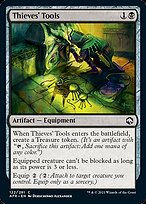






















































































































Adventures in the Forgotten Realms is a large set with 101 commons, 80 uncommons, 60 rares, 20 mythic rares, and four variations of each standard basic land. This is sort of a new standard similar to what was established in Zendikar Rising, but not using double-faced cards. Foil cards are included in booster packs with advertised rate of 33% of boosters. The set was printed in English in the USA, Belgium, and Japan.
Adventures in the Forgotten Realms was sold in 15 card draft booster packs (which contain an additional ad card or double-faced card placeholder). Draft booster boxes have 36 packs.
The US printing uses sequential collation with non-standard common collation to accomodate the showcase land treatment which needs to be gutter-cut (since it has color extending to the edge of the card).
Packs are front-facing and have common-uncommon-rare ordering followed by a basic land and an ad card. There are 10 commons, 3 uncommons, and 1 rare. If there is a foil, it will displace a common and appear after the rare.
| 10 Commons | 3 Uncommons | 1 Rare | 1 Land | 1 Ad Card | |
| 9 Commons | 3 Uncommons | 1 Rare | 1 Foil | 1 Land | 1 Ad Card |
There are three common runs. The A run contains 15 distinct cards each eight times plus one copy of Leather Armor, the short-printed common. The one card with a showcase version that appears on this sheet is Goblin Javelineer; two of the copies are the showcase version. The B run contains 60 distinct cards each appearing twice plus another copy of Leather Armor. This makes Leather Armor a 5/8 short-print. None of these cards has a showcase version. The C run is gutter-cut and contains 25 cards each appearing four times. For cards that have a showcase version, one of the four copies is the showcase version. Note that this 25% showcase rate is lower than the rate from previous sets (although I don't believe this rate was ever officially advertised).
Packs contains 1-2 A commons followed by 5-6 B commons and 2-3 C commons. All three possibilities, 1+6+3, 2+5+3, and 2+6+2, have been observed. These same ranges are true for packs with foils, and all these possibilities, 1+6+2, 1+5+3, and 2+5+2, have also been observed.
The uncommons are divided into an A run and a B run. The A run contains distinct cards each appearing twice. The B run is on a gutter-cut sheet and contains 25 cards each appearing four times. Cards with showcase or borderless versions appear in the B run with one of the four copies being the special version. Packs have three consecutive cards from the A run or three from the B run. Naturally, packs with the A run are more common. (I can't easily tell the exact rate, but it seems clear that it is greater than 2/3; and mathematically it should be 11/16 which is plausible.)
The A common run consists of 15 different cards each appearing eight times plus Leather Armor, the short-printed common. Two of the eight copies of Goblin Javelineer are the showcase version. The choice of first card is mostly arbitrary.
 |  |  |  |  |  |  |  |  |  |  |
 |  |  |  |  |  |  |  |  |  |  |
 |  |  |  |  |  |  |  |  |  |  |
 |  |  |  |  |  |  |  |  |  |  |
 |  |  |  |  |  |  |  |  |  |  |
 |  |  |  |  |  |  |  |  |  |  |
 |  |  |  |  |  |  |  |  |  |  |
 |  |  |  |  |  |  |  |  |  |  |
 |  |  |  |  |  |  |  |  |  |  |
 |  |  |  |  |  |  |  |  |  |  |
 |  |  |  |  |  |  |  |  |  |  |
The B common run consists of 60 different cards each appearing twice plus Leather Armor, the short-printed common. Except for Leather Armor, the cards alternate in a pattern of black, green, white, blue, red. The choice of first card is mostly arbitrary.
 |  |  |  |  |  |  | 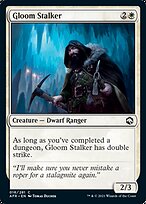 |  | 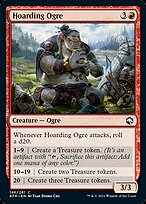 |  |
 |  |  |  |  |  |  |  |  |  |  |
 |  |  |  |  |  |  |  |  |  |  |
 |  |  |  |  |  |  |  |  |  |  |
 |  | 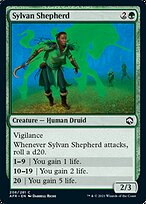 |  |  |  |  |  |  |  |  |
 |  |  |  |  |  |  |  |  |  |  |
 |  |  |  |  |  |  |  |  |  |  |
 |  |  |  |  |  |  |  |  |  |  |
 |  |  |  |  |  |  |  |  |  |  |
 |  |  |  |  |  |  |  |  |  |  |
 |  |  |  |  |  |  |  |  |  |  |
The C common run consists of 25 different cards each appearing four times. For cards that have a showcase variant, one of the four copies is the showcase variant. The choice of first card is mostly arbitrary.
 |  |  |  |  |  |  |  |  |  |
 | 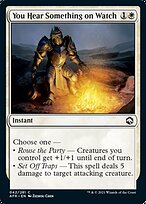 |  |  |  |  |  |  |  | 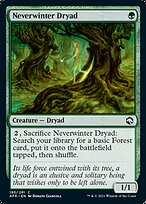 |
 | 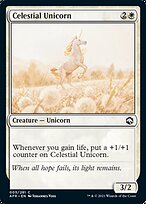 |  |  |  |  |  |  | 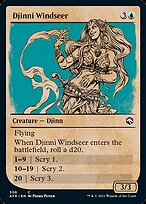 |  |
 |  |  |  |  |  |  |  |  |  |
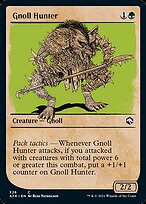 |  |  |  |  | 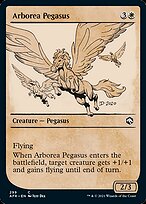 |  |  |  |  |
 |  |  |  |  |  |  |  |  |  |
 |  |  |  |  |  |  |  |  | 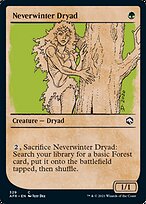 |
 |  |  |  |  |  |  | 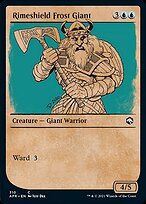 |  |  |
 |  |  |  |  |  |  |  | 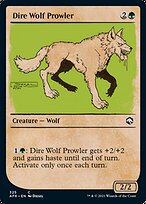 |  |
 |  |  |  |  |  |  |  |  |  |
The A uncommon run consists of 55 different cards each appearing twice. The choice of first card is mostly arbitrary.
 |  |  |  |  |  |  |  |  |  | 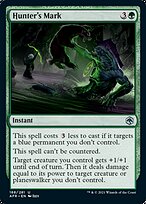 |
 |  |  |  |  |  |  |  |  |  | 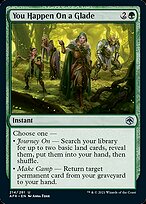 |
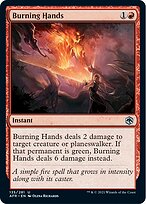 |  |  |  |  |  | 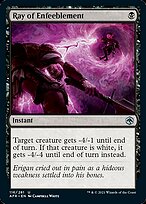 |  |  |  |  |
 |  | 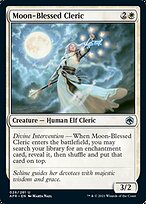 |  | 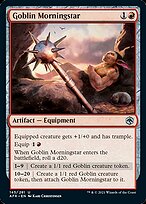 |  |  |  | 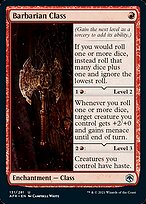 |  |  |
 |  |  |  | 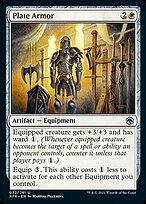 |  |  | 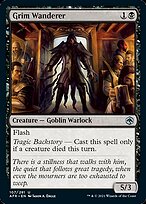 |  | 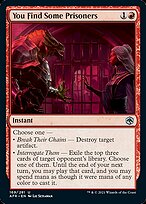 |  |
 |  |  |  |  |  |  |  |  |  |  |
 |  |  |  |  |  |  |  |  |  |  |
 |  |  |  |  |  |  |  |  |  |  |
 |  |  |  |  |  |  |  |  |  |  |
 |  |  |  |  |  |  |  |  |  |  |
The B uncommon run consists of 25 different cards each appearing four times. For cards that have a showcase or borderless variant, one of the four copies is the variant. The choice of first card is mostly arbitrary.
 |  |  |  |  |  |  |  |  |  |
 |  |  |  |  |  |  |  | 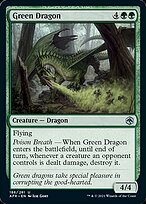 |  |
 |  | 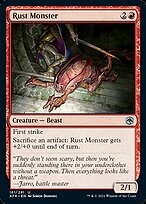 |  |  |  |  |  |  |  |
 | 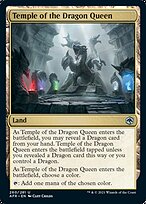 | 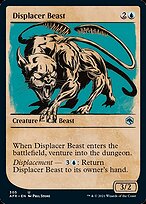 |  |  |  |  |  |  |  |
 |  |  |  |  |  |  |  |  |  |
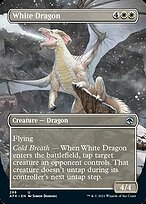 |  |  |  |  |  |  | 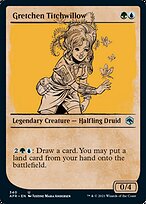 |  |  |
 |  |  |  |  |  |  |  |  |  |
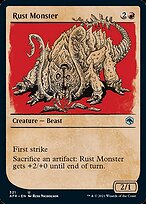 |  |  |  |  |  |  |  |  |  |
 |  |  |  |  |  |  |  |  |  |
 |  |  | 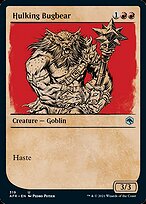 |  |  |  |  |  |  |
Most of the marketing cards in this set have a token, dungeon, or emblem on the front face. In addition, there is a card that has an advertisement for MTG Arena on the front face. They are printed in a 121 card run with items appearing different numbers of times.
Each dungeon has a token on the back. Dungeon of the Mad Mage has a Goblin, Lost Mine of Phandelver has a Skeleton, and Tomb of Annihilation has The Atropal.
 |  |  |  |  |  |  |  |  | 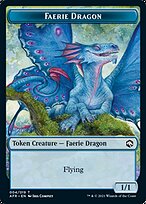 |  |
 |  |  |  |  |  |  |  |  |  |  |
 |  |  |  |  |  |  |  | 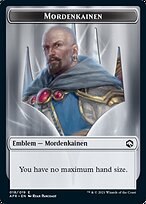 |  | 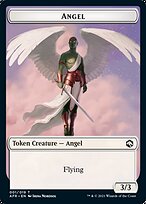 |
 |  |  |  |  |  |  |  |  |  |  |
 |  |  |  |  |  |  |  |  |  |  |
 |  |  |  |  |  |  |  |  |  |  |
 |  |  |  |  |  |  |  |  |  |  |
 |  |  |  |  |  |  |  |  |  |  |
 | 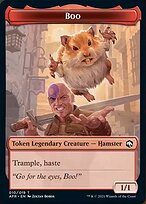 |  |  |  |  |  |  |  |  |  |
 |  |  |  |  |  |  |  |  |  |  |
 |  |  |  |  |  |  |  |  |  |  |
| Token Rarity | ||
|---|---|---|
 Boo × 1 Boo × 1 |  Ellywick Tumblestrum Emblem × 1 Ellywick Tumblestrum Emblem × 1 |  Icingdeath, Frost Tongue × 1 Icingdeath, Frost Tongue × 1 |
 Lolth, Spider Queen Emblem × 1 Lolth, Spider Queen Emblem × 1 | 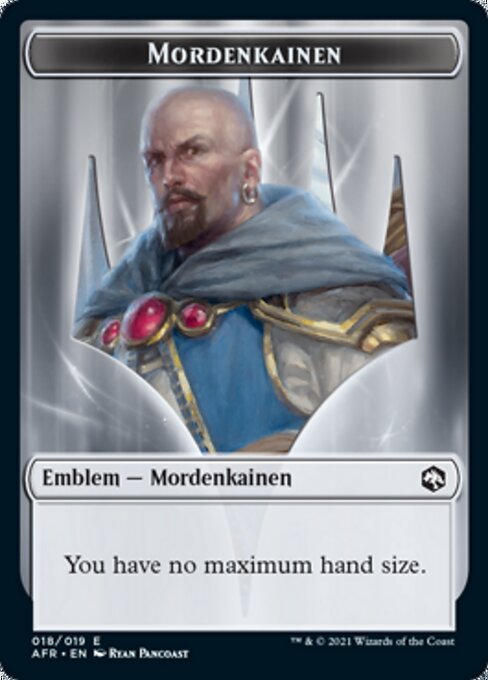 Mordenkainen Emblem × 1 Mordenkainen Emblem × 1 | 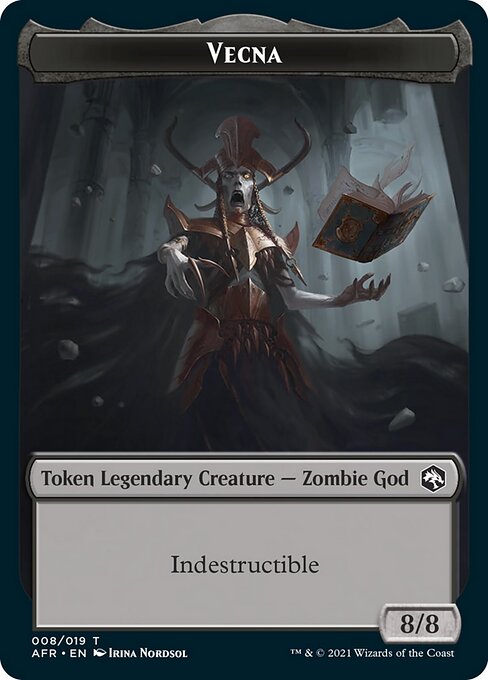 Vecna × 1 Vecna × 1 |
 Zariel, Archduke of Avernus Emblem × 1 Zariel, Archduke of Avernus Emblem × 1 |  Angel × 2 Angel × 2 |  Devil × 2 Devil × 2 |
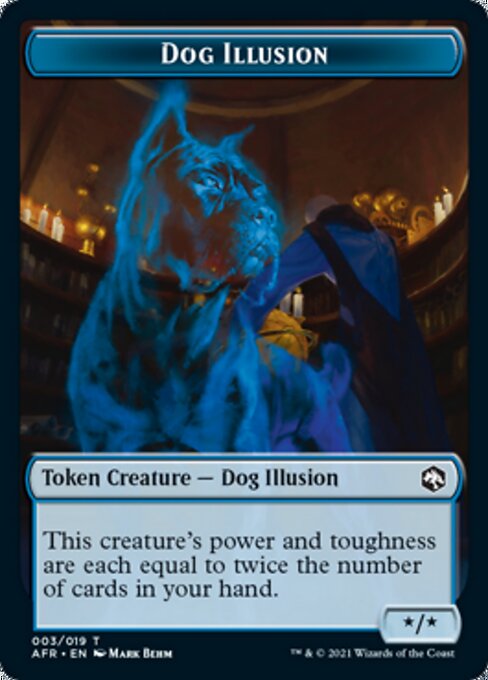 Dog Illusion × 2 Dog Illusion × 2 | 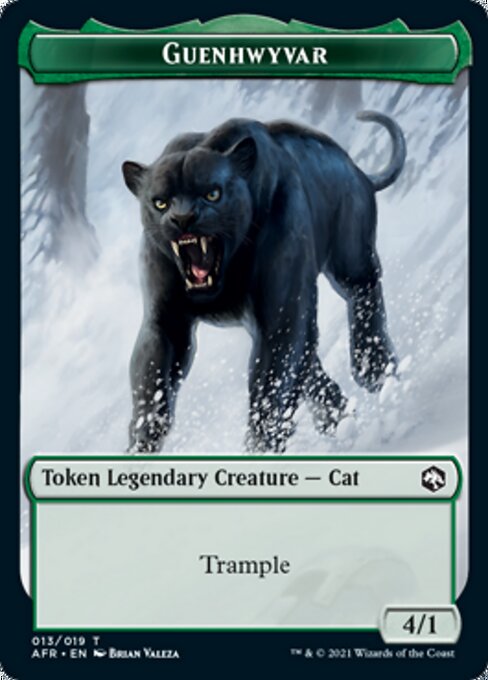 Guenhwyvar × 2 Guenhwyvar × 2 |  Zombie × 3 Zombie × 3 |
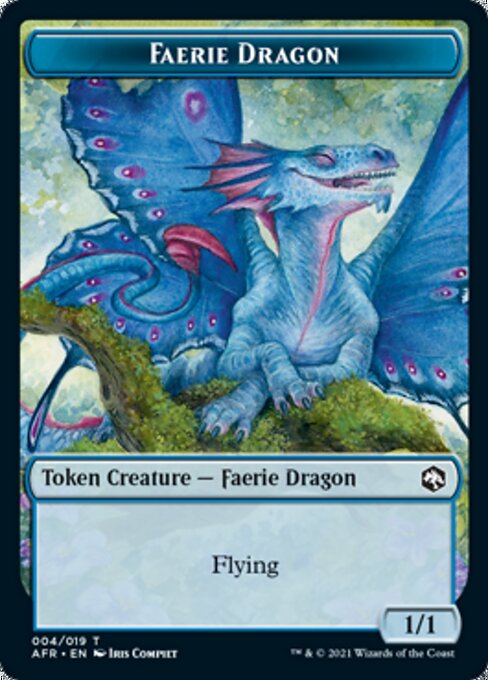 Faerie Dragon × 5 Faerie Dragon × 5 |  Spider × 5 Spider × 5 |  Wolf × 8 Wolf × 8 |
 Arena Ad Card × 10 Arena Ad Card × 10 | 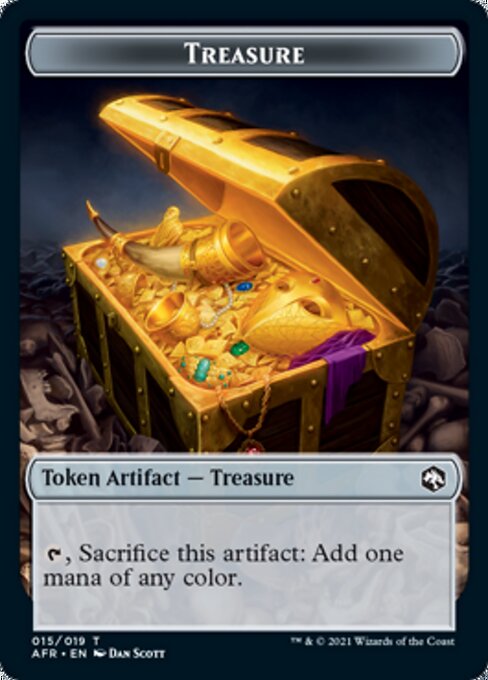 Treasure × 18 Treasure × 18 | 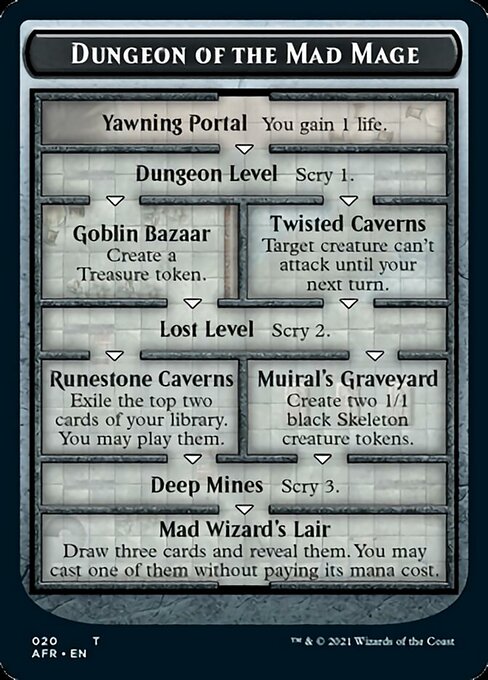 Dungeon of the Mad Mage × 19 Dungeon of the Mad Mage × 19 |
 Lost Mine of Phandelver × 19 Lost Mine of Phandelver × 19 |  Tomb of Annihilation × 19 Tomb of Annihilation × 19 | |
The Belgian printing uses sequential collation with non-standard common collation to accomodate the showcase land treatment which needs to be gutter-cut (since it has color extending to the edge of the card).
Packs are front-facing and have common-uncommon-rare ordering followed by a basic land and an ad card. There are 10 commons, 3 uncommons, and 1 rare. If there is a foil, it will displace a common and appear after the rare.
| 10 Commons | 3 Uncommons | 1 Rare | 1 Land | 1 Ad Card | |
| 9 Commons | 3 Uncommons | 1 Rare | 1 Foil | 1 Land | 1 Ad Card |
There are four common runs. The A run has 60 distinct cards each appearing twice. The B run has 30 distinct card each appearing four times. The cards with showcase versions appear in this run with one of the four copies being the showcase version, except for Evolving Wilds. The C run has 10 distinct cards (probably appearing 12 times each, but I haven't confirmed this). The D run contains only Evolving Wilds.
Each pack has 5-6 cards from A, 2-3 cards from B, 0-1 cards from C, and 0-1 cards from D. These numbers remain true for packs with foils. All pack types have been observed except for foil packs with Evolving Wilds (although such packs would be rare anyway, so I would not be surprised if these exist).
There are three uncommon runs. The A and B runs each have 30 distinct cards each appearing four times. For cards with showcase versions, one of the four copies is the showcase version. The C run has 20 distinct cards including the borderless cards and the showcase land. Packs have 1-2 A cards, 1-2 B cards, and 0-1 C cards. Mathematically, 3/4 of packs should be 1-1-1, 1/8 should be 2-1-0, and 1/8 should be 1-2-0.
The A common run consists of 60 different cards each appearing twice. The choice of first card is mostly arbitrary.
 |  |  |  |  |  |  |  |  |  |  |
 |  |  |  |  |  |  |  |  |  |  |
 |  |  |  |  |  |  |  |  |  |  |
 |  |  |  |  |  |  |  |  |  |  |
 |  |  |  |  |  |  |  |  |  |  |
 |  |  |  |  |  |  |  |  |  |  |
 |  |  |  |  |  |  |  |  |  |  |
 |  |  |  |  |  |  |  |  |  |  |
 |  |  |  |  |  |  |  |  |  |  |
 |  |  |  |  |  |  |  |  |  |  |
 |  |  |  |  |  |  |  |  |  |
The B common run consists of 30 different cards each appearing four times. For cards that have a showcase variants, one of the four copies is the showcase variant. The choice of first card is mostly arbitrary.
 |  |  |  |  |  |  |  |  |  |  |
 |  |  |  |  |  |  |  |  |  |  |
 |  |  |  |  |  |  |  |  |  |  |
 |  |  |  |  |  |  |  |  |  |  |
 |  |  |  |  |  |  |  |  |  |  |
 |  |  |  |  |  |  |  |  |  |  |
 |  |  |  |  |  |  |  |  |  |  |
 |  |  |  |  |  |  |  |  |  |  |
 |  |  |  |  |  |  |  |  |  |  |
 |  |  |  |  |  |  |  |  |  |  |
 |  |  |  |  |  |  |  |  |  |
The A uncommon run consists of 30 different cards each appearing four times. For cards that have a showcase variants, one of the four copies is the showcase variant. The choice of first card is mostly arbitrary.
 |  |  |  |  |  |  |  |  |  |  |
 |  |  |  |  |  |  |  |  |  |  |
 |  |  |  |  |  |  |  |  |  |  |
 |  |  |  |  |  |  |  |  |  |  |
 |  |  |  |  |  |  |  |  |  |  |
 |  |  |  |  |  |  |  |  |  |  |
 |  |  |  |  |  |  |  |  |  |  |
 |  |  |  |  |  |  |  |  |  |  |
 |  |  |  |  |  |  |  |  |  |  |
 |  |  |  |  |  |  |  |  |  |  |
 |  |  |  |  |  |  |  |  |  |
The B uncommon run consists of 30 different cards each appearing four times. The choice of first card is mostly arbitrary.
 |  |  |  |  |  |  |  |  |  |  |
 |  |  |  |  |  |  |  |  |  |  |
 |  |  |  |  |  |  |  |  |  |  |
 |  |  |  |  |  |  |  |  |  |  |
 |  |  |  |  |  |  |  |  |  |  |
 |  |  |  |  |  |  |  |  |  |  |
 |  |  |  |  |  |  |  |  |  |  |
 |  |  |  |  |  |  |  |  |  |  |
 |  |  |  |  |  |  |  |  |  |  |
 |  |  |  |  |  |  |  |  |  |  |
 |  |  |  |  |  |  |  |  |  |
The Japanese printing uses sequential collation with 112 card sheets (which is the usual for Japan). Probably the sheets are 14 × 8. (Despite the fact that the showcase land treatment needs to be gutter-cut in other regions, the Japanese printing doesn't seem to be affected.)
Packs are front-facing starting with the ad card and a basic land, then the rare, 3 uncommons, and 10 commons. If there is a foil, it will appear between the basic land and the rare, displacing a common.
| 1 Ad Card | 1 Land | 1 Rare | 3 Uncommons | 10 Commons | |
| 1 Ad Card | 1 Land | 1 Foil | 1 Rare | 3 Uncommons | 9 Commons |
There are 3 common runs: A, B, and C. A contains 27 distinct cards, and B and C each contain 37 distinct cards. Each pack gets 2 to 3 cards from A followed by 3 to 4 cards from B and 3 to 4 cards from C. This means packs are either 2-4-4, 3-3-4, or 3-4-3. The exact ratios may depend on the way foil collation works.
| A | A | B | B | B | B | C | C | C | C |
| A | A | A | B | B | B | C | C | C | C |
| A | A | A | B | B | B | B | C | C | C |
Commons with a showcase version appear in the A run. The A run has four copies of each card, and when there is a showcase version, one of the four copies is the showcase version.
Foils displace a common. As far as I've seen, there will still be at least 2 A commons, 3 B commons, and 3 C commons, and I have seen all three possibilities for common distribution given a foil.
The A common run consists of 27 different cards each appearing four times. For cards with a showcase version, one of the four copies is the showcase version. The choice of first card is mostly arbitrary.
 |  |  |  |  |  |  |  |
 |  |  |  |  |  |  |  |
 |  |  |  |  |  |  |  |
 |  |  |  |  |  |  |  |
 |  |  |  |  |  |  |  |
 |  |  |  |  |  |  |  |
 |  |  |  |  |  |  |  |
 |  |  |  |  |  |  |  |
 |  |  |  |  |  |  |  |
 |  |  |  |  |  |  |  |
 |  |  |  |  |  |  |  |
 |  |  |  |  |  |  |  |
 |  |  |  |  |  |  |  |
 |  |  |  |
The B common run consists of 37 different cards each appearing three times. The choice of first card is mostly arbitrary.
 |  |  |  |  |  |  |  |
 |  |  |  |  |  |  |  |
 |  |  |  |  |  |  |  |
 |  |  |  |  |  |  |  |
 |  |  |  |  |  |  |  |
 |  |  |  |  |  |  |  |
 |  |  |  |  |  |  |  |
 |  |  |  |  |  |  |  |
 |  |  |  |  |  |  |  |
 |  |  |  |  |  |  |  |
 |  |  |  |  |  |  |  |
 |  |  |  |  |  |  |  |
 |  |  |  |  |  |  |  |
 |  |  |  |  |  |  |
The C common run consists of 37 different cards each appearing three times. The choice of first card is mostly arbitrary.
 |  |  |  |  |  |  |  |
 |  |  |  |  |  |  |  |
 |  |  |  |  |  |  |  |
 |  |  |  |  |  |  |  |
 |  |  |  |  |  |  |  |
 |  |  |  |  |  |  |  |
 |  |  |  |  |  |  |  |
 |  |  |  |  |  |  |  |
 |  |  |  |  |  |  |  |
 |  |  |  |  |  |  |  |
 |  |  |  |  |  |  |  |
 |  |  |  |  |  |  |  |
 |  |  |  |  |  |  |  |
 |  |  |  |  |  |  |